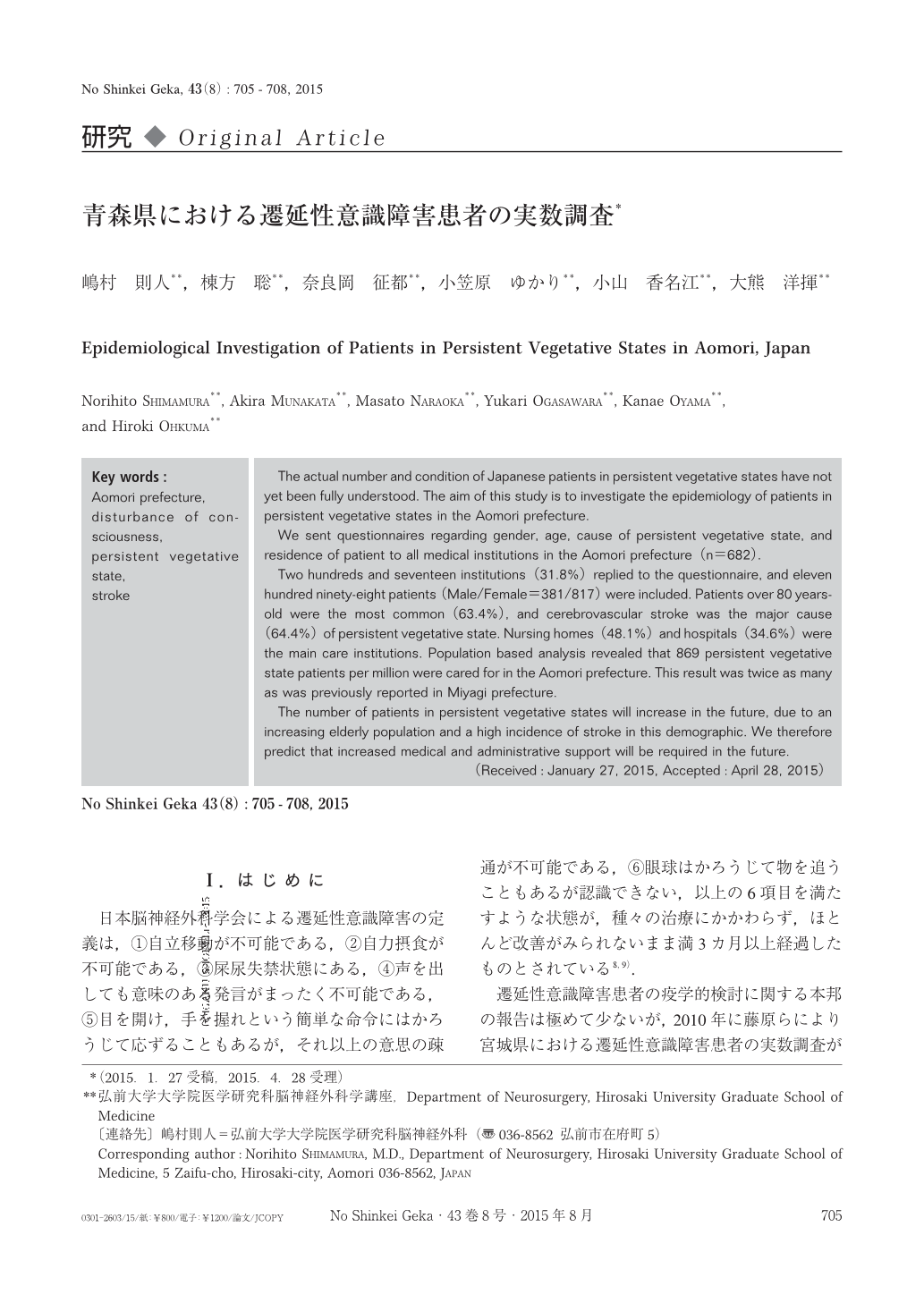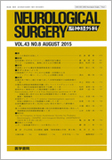Japanese
English
- 有料閲覧
- Abstract 文献概要
- 1ページ目 Look Inside
- 参考文献 Reference
Ⅰ.はじめに
日本脳神経外科学会による遷延性意識障害の定義は,①自立移動が不可能である,②自力摂食が不可能である,③屎尿失禁状態にある,④声を出しても意味のある発言がまったく不可能である,⑤目を開け,手を握れという簡単な命令にはかろうじて応ずることもあるが,それ以上の意思の疎通が不可能である,⑥眼球はかろうじて物を追うこともあるが認識できない,以上の6項目を満たすような状態が,種々の治療にかかわらず,ほとんど改善がみられないまま満3カ月以上経過したものとされている8,9).
遷延性意識障害患者の疫学的検討に関する本邦の報告は極めて少ないが,2010年に藤原らにより宮城県における遷延性意識障害患者の実数調査が行われた2).この調査結果から,日本全体では55,000人以上の遷延性意識障害患者がいると推計された.また,従来は遷延性意識障害の原因として頭部外傷が最も多いと考えられてきたが,脳卒中の割合が増加してきていることも明らかにされた2,6).その後の2011年の東日本大震災では,遷延性意識障害患者や要介護状態の患者の移動およびケアの問題が注目された.
都道府県単位での遷延性意識障害患者の実数調査は,その本邦での全体像を把握する上で必要不可欠であり,加えて脳卒中多発県である青森県での調査は非常に有益であると考え,青森県における遷延性意識障害患者の実数調査を行ったので報告する.
The actual number and condition of Japanese patients in persistent vegetative states have not yet been fully understood. The aim of this study is to investigate the epidemiology of patients in persistent vegetative states in the Aomori prefecture.
We sent questionnaires regarding gender, age, cause of persistent vegetative state, and residence of patient to all medical institutions in the Aomori prefecture(n=682).
Two hundreds and seventeen institutions(31.8%)replied to the questionnaire, and eleven hundred ninety-eight patients(Male/Female=381/817)were included. Patients over 80 years-old were the most common(63.4%), and cerebrovascular stroke was the major cause(64.4%)of persistent vegetative state. Nursing homes(48.1%)and hospitals(34.6%)were the main care institutions. Population based analysis revealed that 869 persistent vegetative state patients per million were cared for in the Aomori prefecture. This result was twice as many as was previously reported in Miyagi prefecture.
The number of patients in persistent vegetative states will increase in the future, due to an increasing elderly population and a high incidence of stroke in this demographic. We therefore predict that increased medical and administrative support will be required in the future.

Copyright © 2015, Igaku-Shoin Ltd. All rights reserved.


